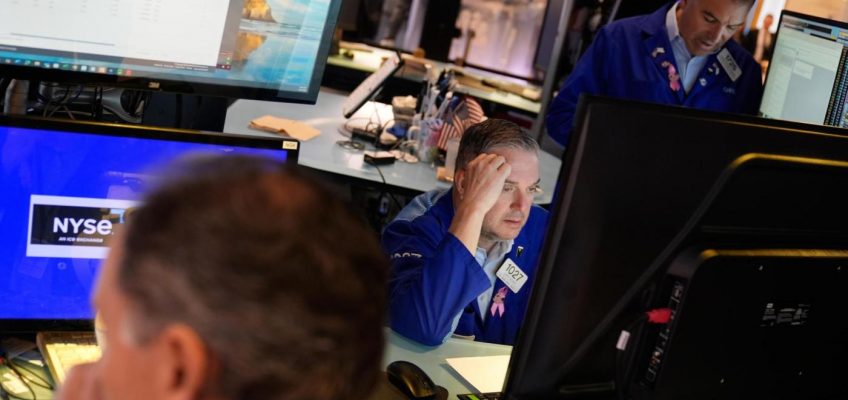By DAMIAN J. TROISE, Associated Press Business Writer
NEW YORK (AP) — Stocks slipped in morning trading on Wall Street Tuesday as trade tensions escalate again with China.
The S&P 500 fell 0.5%. The majority of stocks within the index gained ground, but big technology stocks with outsized values fell and offset gains elsewhere.
Related Articles
Pennsylvania man pleads guilty in arson attack at governor’s mansion while Shapiro’s family slept
Supreme Court rejects Alex Jones’ appeal of $1.4 billion defamation judgment in Sandy Hook shooting
ICE’s use of full-body restraints during deportations raises concerns over inhumane treatment
Instagram says it’s safeguarding teens by limiting them to PG-13 content
Rare October storm brings heavy rain and possible mudslides to Southern California
The Dow Jones Industrial Average slipped 76 points, or 0.2%, as of 10:41 a.m. Eastern time. The Nasdaq composite shed 0.9%.
The slide marks another sharp twist for markets over the last few days. Wall Street tumbled on Friday for its worst day since April and bounced back on Monday for its best day since May. The swings were prompted by shifting trade sentiment between the U.S. and China.
The latest dip follows China’s Commerce Ministry banning dealings by Chinese companies with five subsidiaries of South Korean shipbuilder Hanwha Ocean, swiping at President Donald Trump’s efforts to rebuild the industry in America. European markets were mostly lower and Asian markets fell.
Technology stocks are particularly sensitive to trade issues involving China. Big chipmakers and other companies rely on China for raw materials and manufacturing. China’s large consumer base is also important for sales growth. Chipmaker Nvidia slumped 3.3%.
The ongoing trade war between the U.S. and the world has been an unpredictable weight on the market. The trade conflict between the U.S. and China is potentially the most economically consequential, owing to those nations’ positions as the two largest economies in the world.
International shipping and shipbuilding have become a major source of friction between Washington and Beijing, with each side imposing new port fees on each others’ vessels. Those fees went into effect on Tuesday.
The U.S. economy has so far dodged any major impact from the frequently shifting U.S. tariff policies. That could change if nations fall back into a cycle of retaliatory tariffs and companies pass along more of the higher costs to consumers.
The U.S. government shutdown has put a halt to the usual economic updates on inflation, consumer spending and employment. Wall Street is looking toward the latest round of company earnings and forecasts to get a better sense of the broader economic picture.
Upcoming profit reports will also help Wall Street gauge the broader market’s value amid criticism that it has become too expensive after prices rose much faster than corporate profits. For stocks to look less expensive overall, either prices need to fall, or companies’ profits need to rise.
JPMorgan Chase slipped 1.3%, despite beating Wall Street’s profit forecasts for its latest quarter. Wells Fargo rose 6.2% after beating analysts’ forecasts.
Health care giant Johnson & Johnson fell 1.4% after announcing that it will separate its orthopedics business into a standalone company.
Treasury yields held relatively steady. The yield on the yield on the 10-year Treasury fell to 4.04% from 4.05% late Friday. Bond markets were closed in the U.S. on Monday for a holiday.
Gold edged 0.4% higher and remains above $4,100 per ounce. The precious metal has soared 57% in 2025 amid a long list of uncertainties, including tariffs and the economy.
AP writers Yuri Kageyama and Matt Ott contributed to this report.




